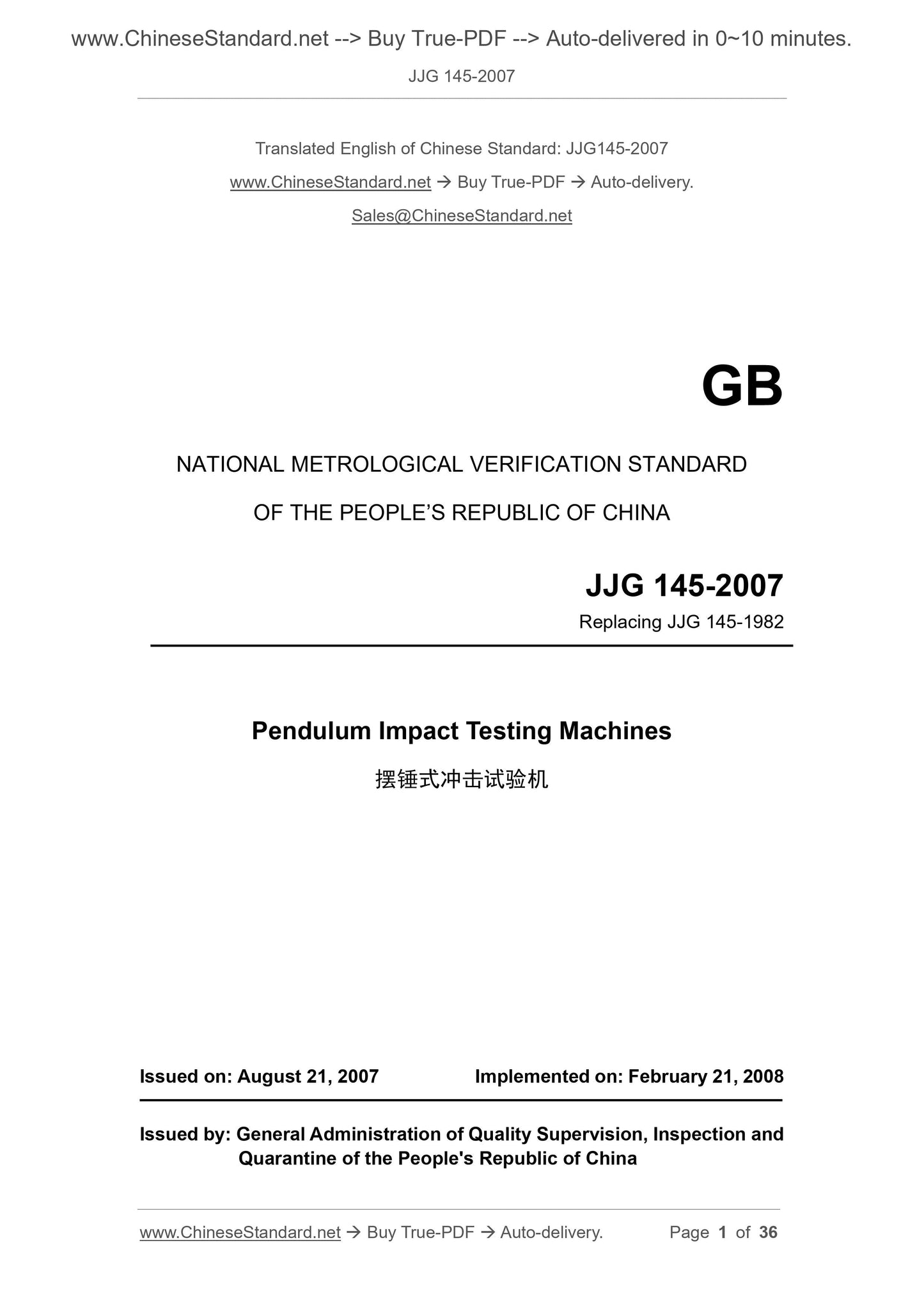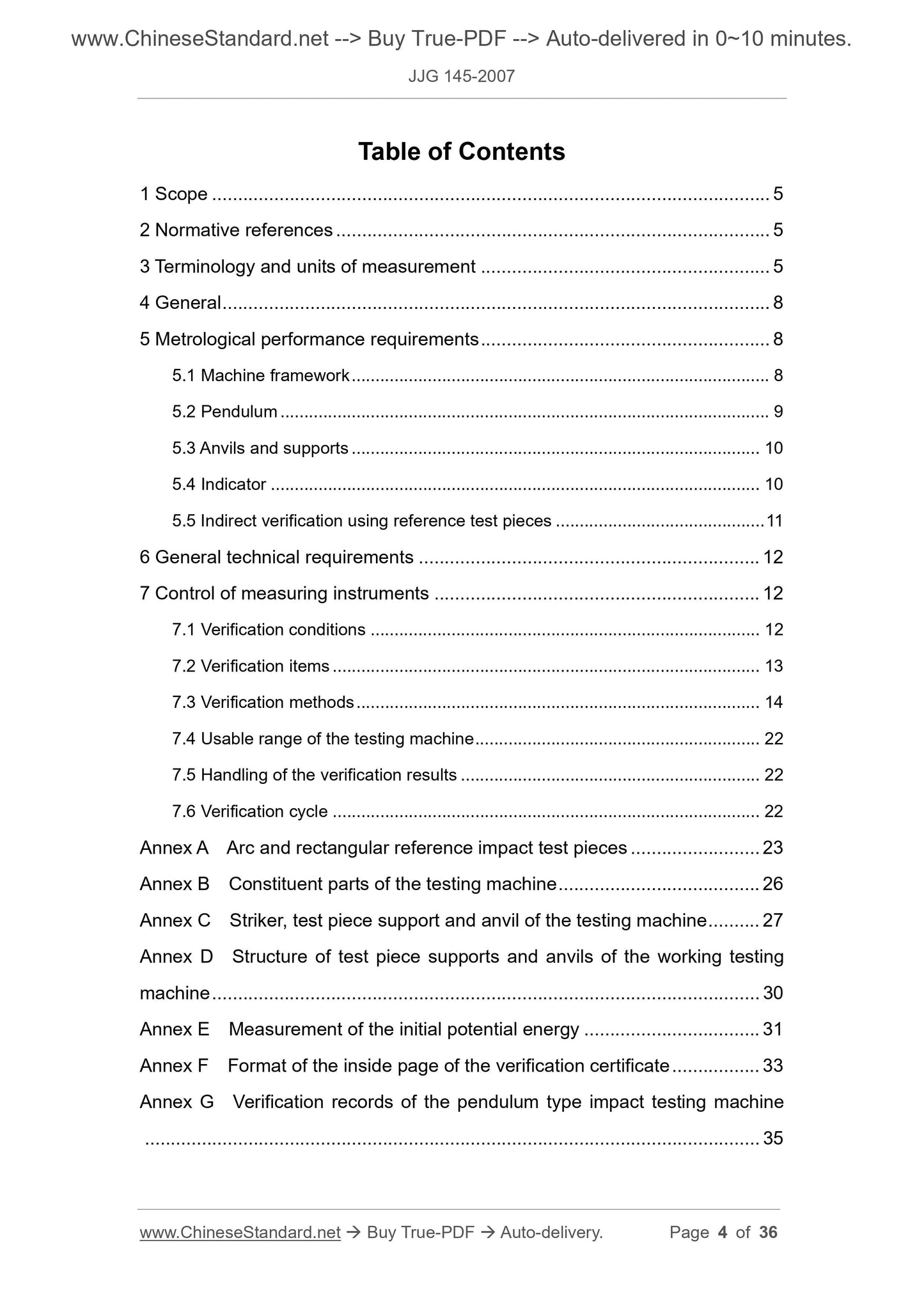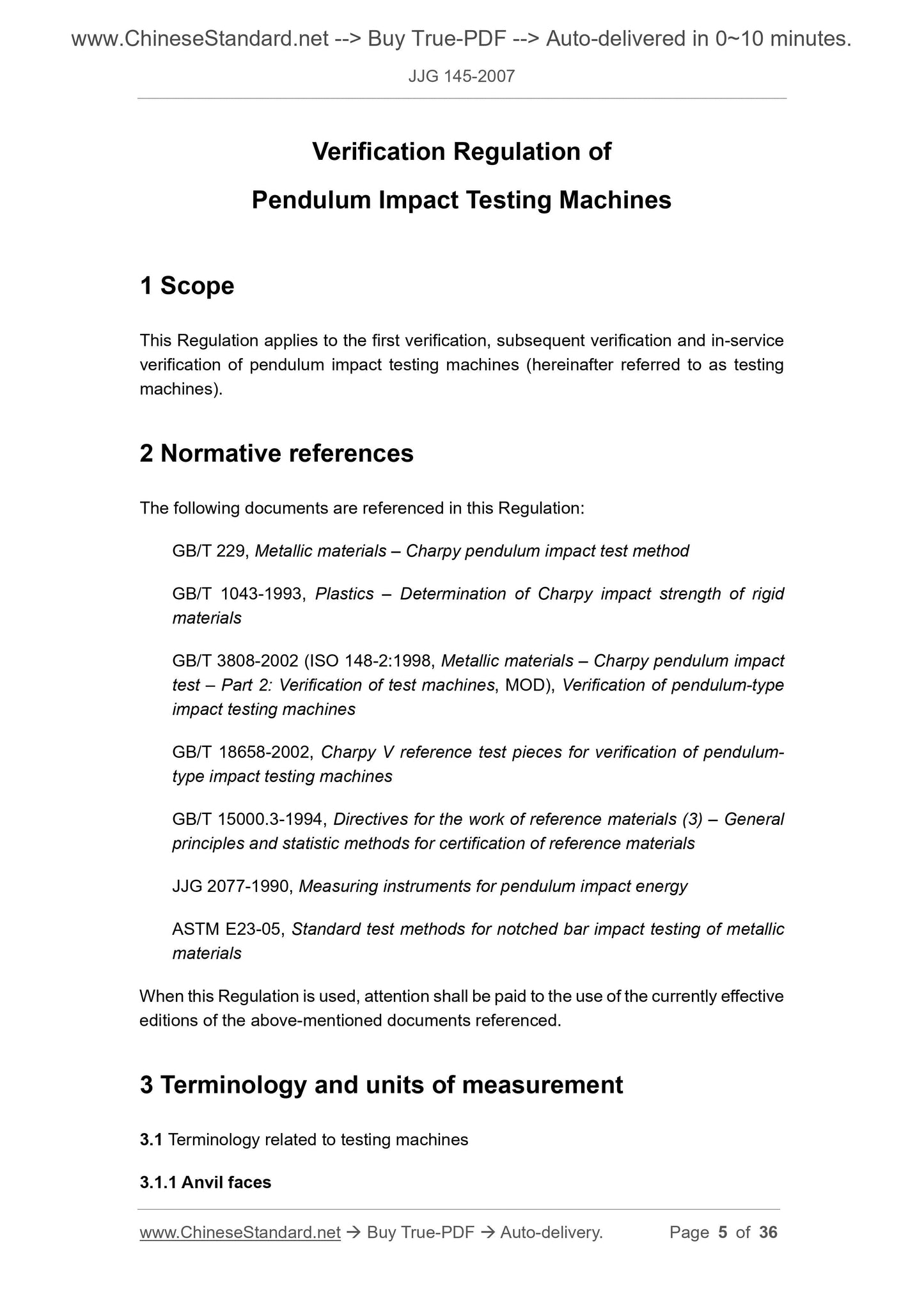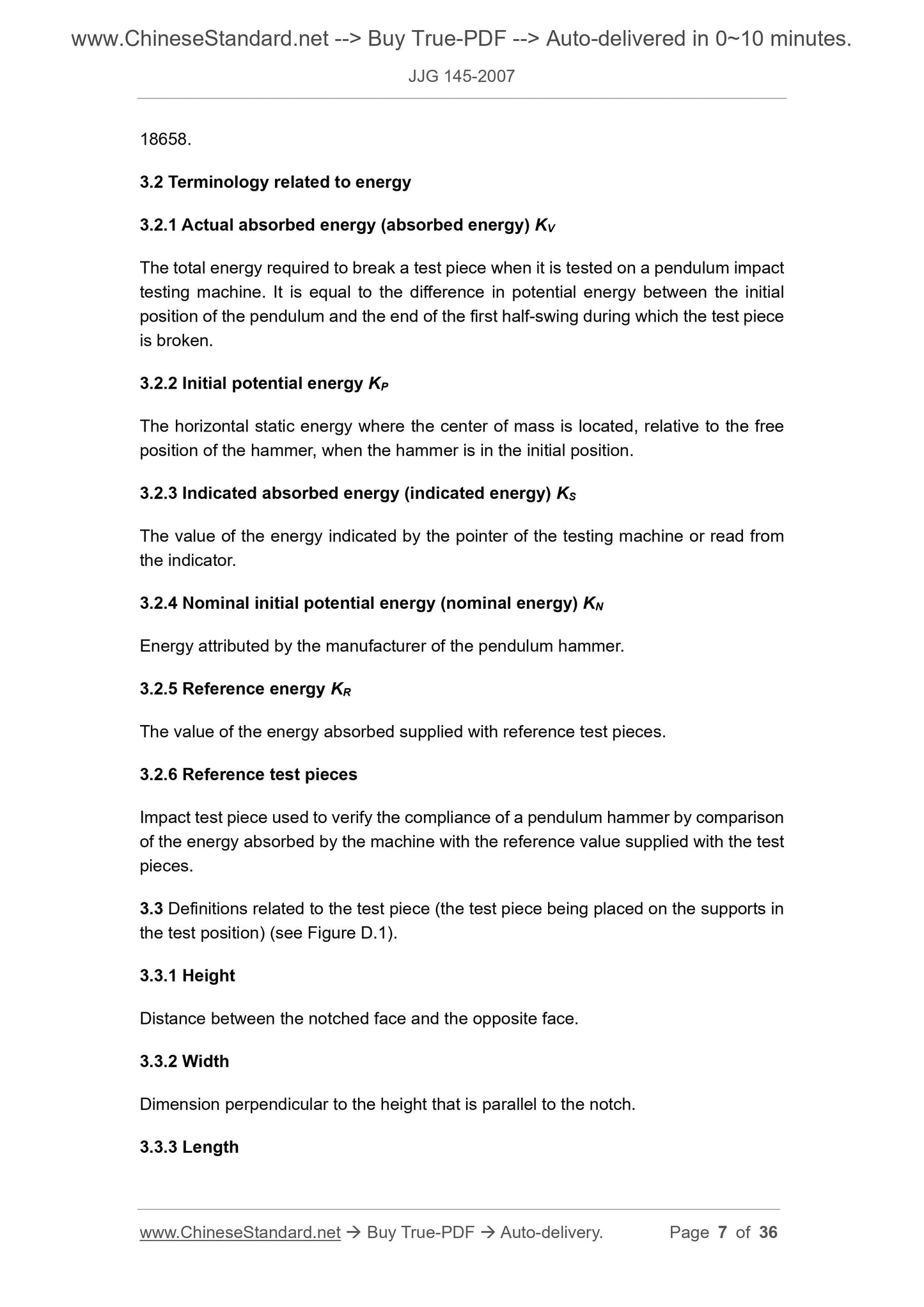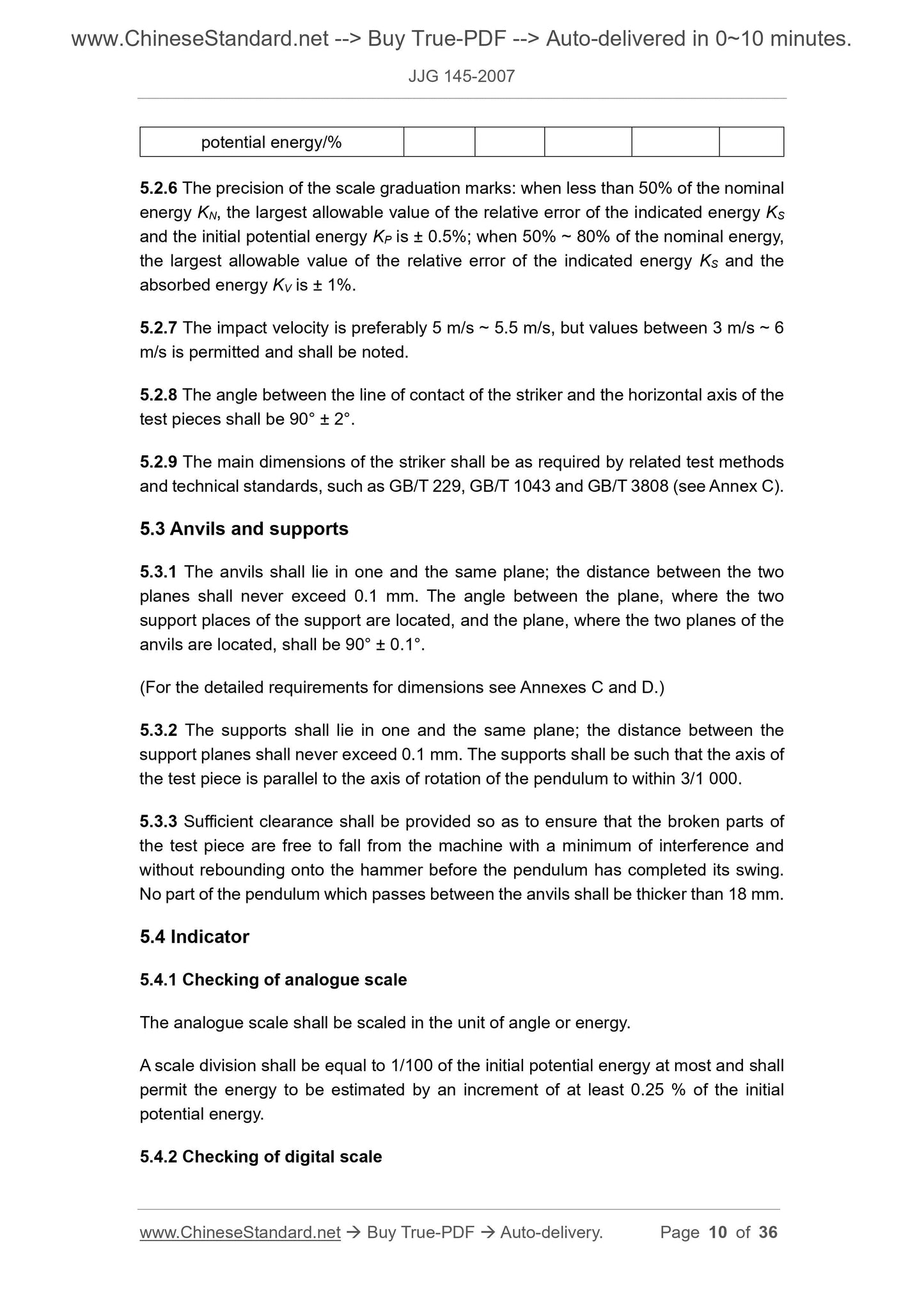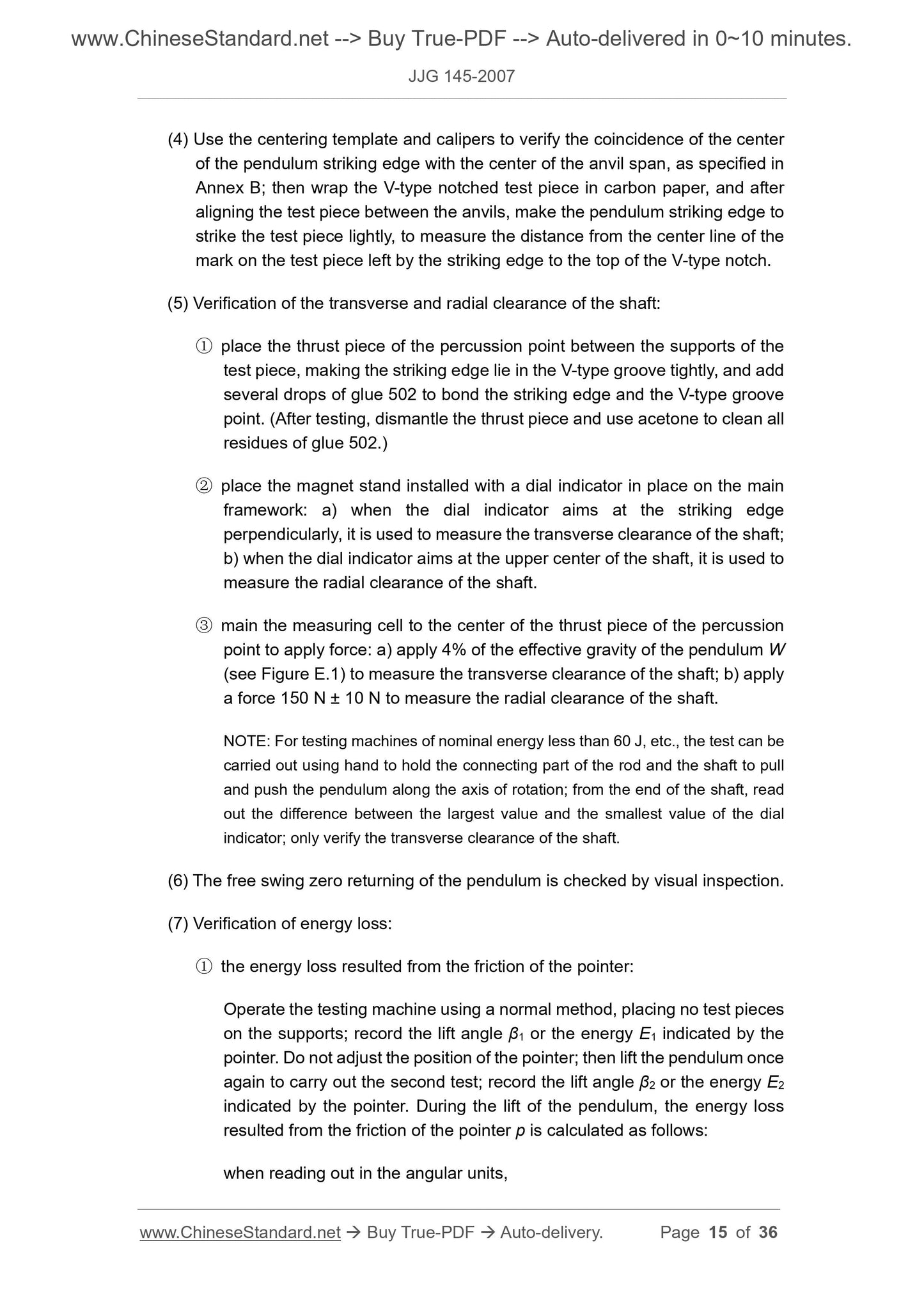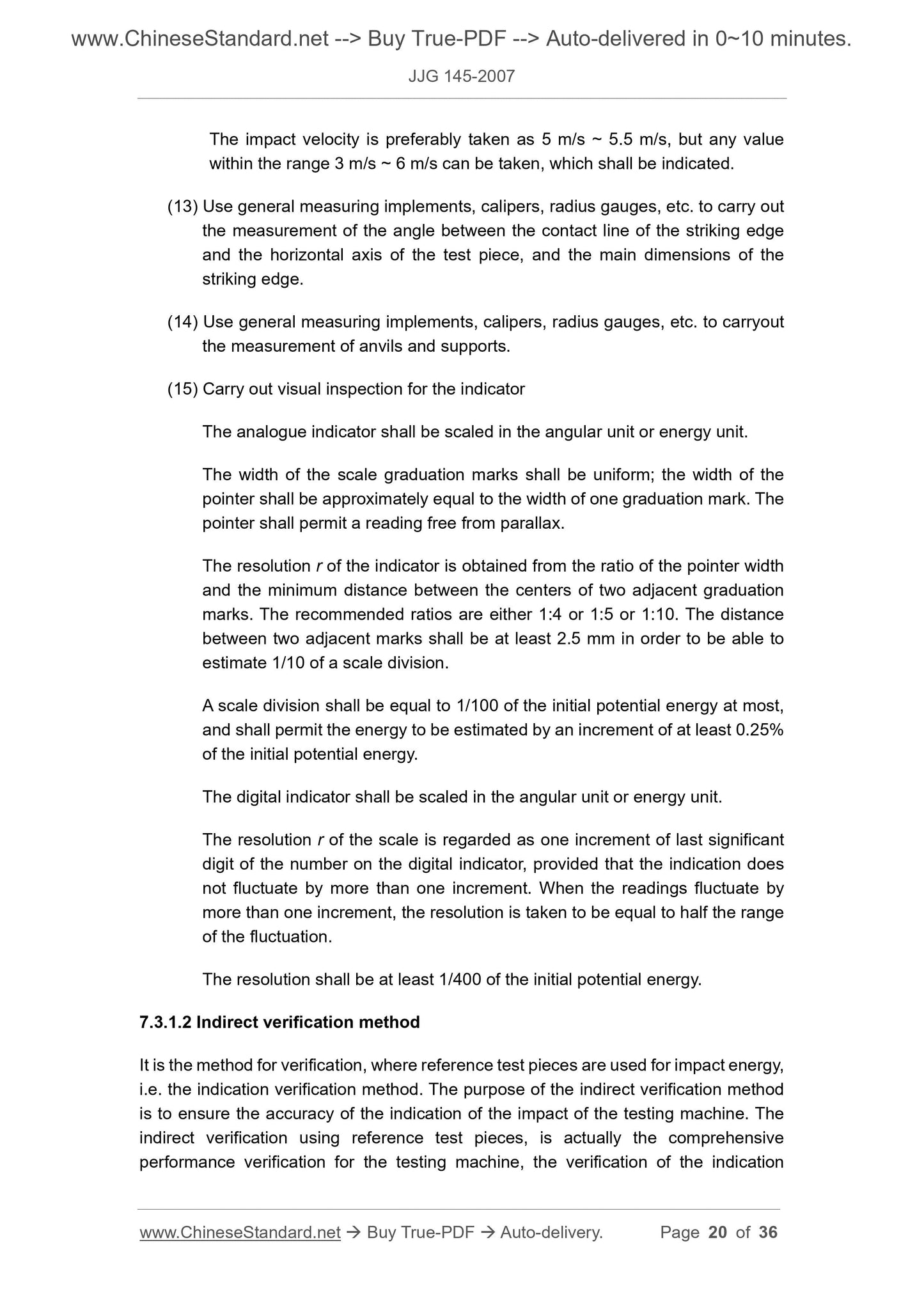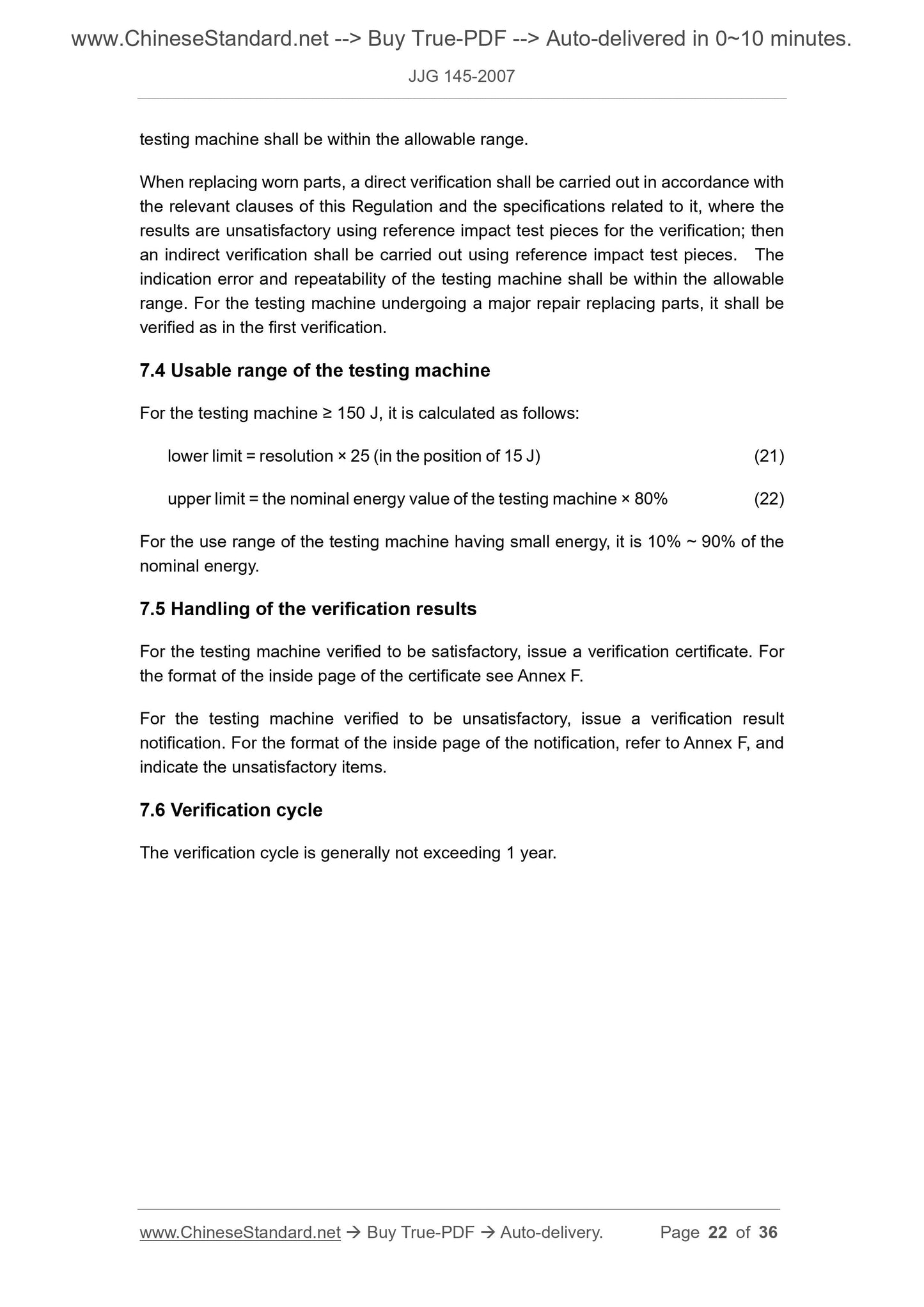1
/
of
8
www.ChineseStandard.us -- Field Test Asia Pte. Ltd.
JJG 145-2007 English PDF
JJG 145-2007 English PDF
Regular price
$370.00
Regular price
Sale price
$370.00
Unit price
/
per
Shipping calculated at checkout.
Couldn't load pickup availability
JJG 145-2007: Pendulum Impact Testing Machines
Delivery: 9 seconds. Download (and Email) true-PDF + Invoice.Get Quotation: Click JJG 145-2007 (Self-service in 1-minute)
Newer / historical versions: JJG 145-2007
Preview True-PDF
Scope
This Regulation applies to the first verification, subsequent verification and in-serviceverification of pendulum impact testing machines (hereinafter referred to as testing
machines).
Basic Data
| Standard ID | JJG 145-2007 (JJG145-2007) |
| Description (Translated English) | Pendulum Impact Testing Machines |
| Sector / Industry | Metrology and Measurement Industry Standard |
| Classification of Chinese Standard | A53 |
| Classification of International Standard | 17.100 |
| Word Count Estimation | 26,258 |
| Date of Issue | 2007-08-21 |
| Date of Implementation | 2008-02-21 |
| Older Standard (superseded by this standard) | JJG 145-1982 |
| Quoted Standard | AQSIQ Announcement No. 142 of 2007 |
| Regulation (derived from) | AQSIQ Announcement No. 142 of 2007 |
| Issuing agency(ies) | General Administration of Quality Supervision, Inspection and Quarantine |
| Summary | This standard applies to Charpy impact test machine initial verification, testing and use of follow-up inspection. |
Share
